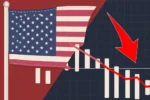The Future of Student Loans: As 2025 unfolds, GOP lawmakers, alongside former President Donald Trump, are positioning themselves to reshape the landscape of student loans. With Republicans now holding a majority in Congress, a new trifecta of power is emerging, promising significant shifts in policies that could impact millions of student-loan borrowers across the nation.
Rescinding Biden’s Student Debt Relief Measures
At the heart of the GOP’s proposed changes is the repeal of several key initiatives introduced by President Joe Biden’s administration. Specifically, the GOP has voiced a strong opposition to the SAVE plan, an income-driven repayment initiative that was designed to reduce monthly payments and provide a shorter timeline for loan forgiveness. This move aims to reverse what GOP lawmakers consider an unsustainable expansion of student-debt relief.
The GOP has also proposed ending regulations that allowed for broader loan forgiveness for borrowers defrauded by their educational institutions. Under Biden, the Education Department took steps to forgive loans for borrowers whose schools were found to have engaged in deceptive practices. The GOP’s suggested repeal of these protections could affect thousands of borrowers who may have relied on these measures for financial relief.
Furthermore, Republicans are seeking to limit the eligibility for Public Service Loan Forgiveness (PSLF), a program that forgives loans after 10 years of qualifying public sector work. For many public service employees, this program represents a significant opportunity for debt relief. The GOP’s proposed restrictions would reduce access to this vital program, impacting those dedicated to careers in education, healthcare, and nonprofit sectors.
Proposals for New Reforms: Bipartisan Support and Cost-Saving Ideas
While these efforts may be contentious, the GOP has also introduced proposals that have garnered bipartisan support. One notable example is the suggestion to eliminate interest capitalization. Interest capitalization occurs when unpaid interest is added to a borrower’s principal balance, increasing the overall debt burden. This change would be a win for borrowers, as it would prevent their debts from growing due to accrued interest.
Another reform gaining traction involves creating a second “rehabilitation loan” for borrowers in default. Under current law, borrowers are only allowed to rehabilitate their loans once. The GOP’s proposal would provide an additional opportunity for those in default to restore their loans to good standing by making nine payments. This could help individuals who have fallen behind on payments get back on track and avoid long-term damage to their credit.
Additionally, the GOP is pushing for reforms to the Pell Grant program, with a proposal to expand eligibility for short-term credential programs. This change could make higher education more accessible for students seeking to enter the workforce quickly, as short-term programs typically offer more affordable and specialized training.
Cost Savings and Fiscal Responsibility
In their budget blueprint, GOP lawmakers argue that these changes will not only reduce the overall student loan burden but also generate significant savings. According to a memo compiled by Republicans on the House Budget Committee, eliminating the SAVE plan and restructuring income-driven repayment programs could save the federal government $127.3 billion over the next decade. Additionally, repealing the regulations for defrauded borrowers could lead to savings of $14.6 billion in the same period.
For the GOP, these proposed reforms are part of a broader strategy to reduce government spending and address what they describe as “unconstitutional, inflationary, and regressive student loan debt cancellations.” They have framed Biden’s debt relief measures as a costly and inefficient policy that benefits high-earning graduates while potentially burdening taxpayers.
Challenges Ahead: Pushback from Democrats and Borrowers
Despite these proposals, the road ahead for GOP-backed changes may not be smooth. Democratic lawmakers have consistently championed policies aimed at easing the student debt crisis, such as greater transparency in higher education financing and expanded access to loan forgiveness programs like PSLF. They have also pushed for more substantial and permanent student debt relief.
Additionally, many borrowers are anxiously awaiting the outcome of ongoing legal battles over the SAVE plan, which remains in legal limbo as GOP-led states challenge its implementation. With both parties at odds over student loan policy, the coming months will likely see heated debates and political wrangling as lawmakers attempt to shape the future of student debt relief.
What’s Next for Student Loan Borrowers?
For now, student-loan borrowers are in a state of uncertainty. While Trump and Republican lawmakers have made it clear that they intend to roll back many of Biden’s student-debt relief measures, it remains to be seen how their proposals will fare in the broader legislative process. Borrowers must stay informed about potential changes, as these decisions will have a lasting impact on their financial futures.
As the GOP continues to push for reforms to student loan programs, it will be crucial for borrowers to monitor developments and advocate for policies that best address their needs. While changes are on the horizon, the ultimate fate of student loan borrowers will depend on the political will of lawmakers in the coming months.



